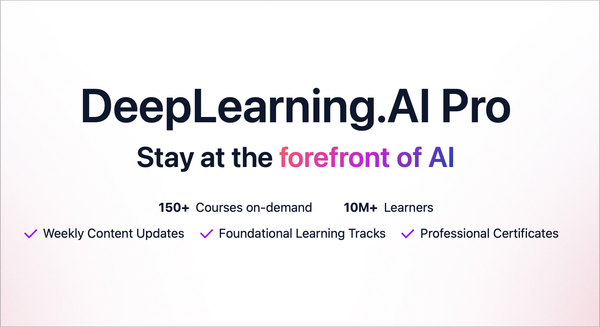GLM-4.5’s high-performing, low-cost open model: Google matches (or beats) OpenAI’s math performance
University presses look to lock in AI licensing deals. Unitree’s new, much less expensive humanoid robot. Nvidia adapts CUDA to work with RISC-V chips. AI can predict ancient Latin inscriptions from fragments.

In today’s edition of Data Points, you’ll learn more about:
- University presses look to lock in AI licensing deals
- Unitree’s new, much less expensive humanoid robot
- Nvidia adapts CUDA to work with RISC-V chips
- AI can predict ancient Latin inscriptions from fragments
But first:
Chinese startup Z.ai launches low-cost, agentic GLM-4.5 family
Chinese AI startup Z.ai announced Monday that its new GLM-4.5 model costs less to use than DeepSeek’s breakthrough AI system while requiring only eight Nvidia H20 chips to operate. The model charges 11 cents per million input tokens compared to DeepSeek’s 14 cents. Built with a Mixture-of-Experts (MoE) architecture featuring 355 billion total parameters and 32 billion active parameters, GLM-4.5 ranks third overall across 12 benchmarks and matches Claude 4 Sonnet’s performance on agent tasks while achieving a 64.2 percent score on coding benchmarks. (z.ai)
Google’s AI achieves gold at International Mathematical Olympiad
Google DeepMind’s AI system became the first machine to achieve “gold medal” status at the International Mathematical Olympiad, solving five of six problems at the 2025 competition held in Australia. The system competed under the same conditions as human contestants, completing two 4.5-hour exam sessions without tools or internet access, and submitting natural language proofs for evaluation. Unlike previous attempts that relied on specialized mathematical proof systems, DeepMind’s approach used an end-to-end language model, demonstrating that general-purpose AI can tackle complex mathematical reasoning without domain-specific tools. Earlier, OpenAI announced that its experimental model achieved similar results on the same problems, though it did not officially enter the competition. (Google)
Johns Hopkins University Press to license books for AI training
Johns Hopkins University Press announced it will license its book catalog to train proprietary large language models, giving authors until the end of August to opt out of the agreement. The press cited concerns that AI companies may already be scraping their content from pirated sites, making a formal contract “the most effective way to manage the risk now.” The deal aims to generate revenue for the nonprofit publisher as higher education faces financial contraction, though individual authors will earn less than $100 per title. The press did not disclose which AI company will receive the license or the total value of the deal. (The Baltimore Banner)
Chinese robotics firm Unitree unveils $5,900 humanoid robot ahead of IPO
Unitree Robotics unveiled its R1 humanoid robot priced at 39,999 yuan ($5,900), making it one of the most affordable humanoid robots available for individual developers and consumers. The 121cm tall, 25kg robot features 26 joints and demonstrated athletic capabilities including cartwheels, handstands, and running in promotional videos. The R1 significantly undercuts competitors’ pricing, with rival Chinese models ranging from $12,000 to $41,000. The company plans to file for an IPO by December, potentially becoming the first humanoid robot maker to list on a mainland Chinese exchange. (South China Morning Post)
Nvidia brings CUDA support to RISC-V processors
At the 2025 RISC-V Summit in China, Nvidia announced that its CUDA software platform will support RISC-V CPUs as the main processor for CUDA-based systems. The announcement included diagrams showing RISC-V CPUs running CUDA system drivers and orchestrating GPU computations alongside DPUs for networking tasks. This move bridges Nvidia’s proprietary CUDA stack with an open architecture that’s developing rapidly in China, potentially positioning RISC-V as a viable alternative to ARM or x86 for future AI and HPC processor designs. The support expands CUDA opportunities for systems that need open instruction sets or custom processor implementations, particularly benefiting Chinese companies developing custom silicon and Nvidia Jetson developers working on embedded computing platforms. (Tom’s Hardware)
Aeneas analyzes and predicts text in ancient Roman inscriptions
Google DeepMind introduced Aeneas, an AI model designed to help historians interpret, date, and restore fragmentary Latin inscriptions from the Roman world. The model searches for parallels across 176,000 Latin inscriptions, processes both text and images, and can restore gaps in the text where the missing length of the inscription is unknown, a first for this field. Aeneas achieves 73 percent accuracy in restoring damaged inscriptions with gaps up to ten characters and can attribute texts to one of 62 Roman provinces with 72 percent accuracy. The development addresses a critical need in historical research, as ancient inscriptions are often weathered or incomplete, making traditional analysis extremely time-consuming. The model is freely available at predictingthepast.com, with open-sourced code and datasets for researchers. (Google)
Want to know more about what matters in AI right now?
Read the latest issue of The Batch for in-depth analysis of news and research.
Last week, Andrew Ng invited top developers to the Buildathon — a one-day challenge to build software fast with AI tools, shifting the focus from coding to product decisions.
“We’ll provide a loose product spec, say on a Real-Time Multiplayer Code Editor or Personal Finance Tracker. Historically, these products may have taken a team of 2 or 3 engineers weeks or months to build. But we hope participants will be able to build them in closer to 60 minutes.”
Read Andrew’s letter here.
Other top AI news and research stories covered in depth:
- Google and Cognition split up Windsurf assets and talent following OpenAI’s unsuccessful $3B bid, shifting dynamics in AI-assisted coding.
- Moonshot unveiled Kimi K2, a trillion-parameter model designed for advanced agentic tool use.
- The EU introduced a code of practice to help developers comply with the AI Act’s upcoming regulations.
- Google’s AlphaEvolve combined LLMs with evolutionary algorithms to tackle complex math problems and accelerate Gemini model training.




